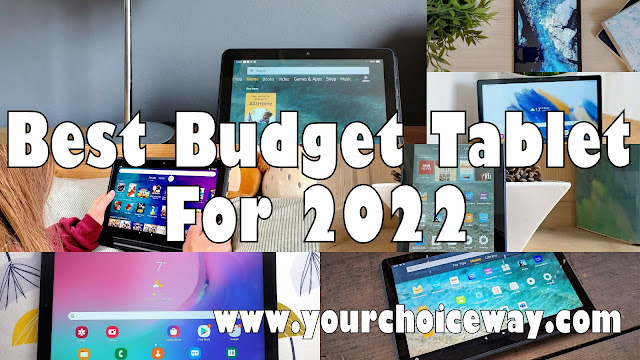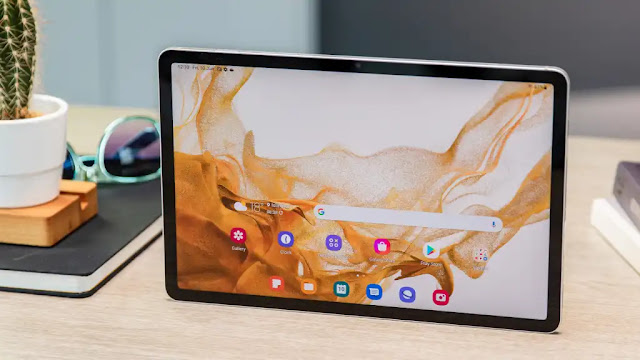The third-gen iPad Pro 12.9in was heavily updated and redesigned for 2018, but is it still a good purchase now? Well yes, if you can find the right model on sale.
Should I Buy The Apple iPad Pro 12.9in (2018)?
Pros
- Sleek design
- Stunning display
- Powerful performance
Cons
- Expensive
Our Verdict
Price When Reviewed
- From $999 | Model reviewed $1,899
Back in 2018, the iPad Pro got its big redesign following the iPhone and Watch. There's no Home button or Lightning port and the tablet now has tiny bezels and rounded corners. But is it still worth buying today?
In this review, we take an in-depth look at the third-gen iPad Pro 12.9in. We benchmark its (absurdly fast) A12X Bionic processor, run battery and camera tests, and evaluate its radical re-design, updated specs list and whopping prices.
Note that this has now been replaced by a 2020 model (4th-gen) which is available from £969. Read our full iPad Pro 12.9 (2020) review.
Redesigning The Apple iPad
Apple radically redesigned Pros for 2018, instantly making the old 10.5in Pro look old-fashioned. The Home button has gone entirely, the bezels have been shrunk and the display now has curved corners to match the chassis, all of which mean the front of the iPad is utterly dominated by screen.
The Home button being scrapped means, of course, that you need to use the iPad like an iPhone. That means various gestures via the bar at the bottom such as swiping up to go back to the home screen. It's unusual when you first try it but quickly becomes normal and you'll forget about the Home button in no time,
A sleek front is nice, but much of the redesign is found when you turn the iPad Pro over. The industrial-looking rear is no longer rounded but is completely flat, like some earlier iPhones. While it looks great, it does make it a little tricky to pick up from a flat surface like a desk.
This is the third iPad Pro Apple was released with a 12.9in screen, but thanks to this redesign the chassis has shrunk around it. It's far smaller, as well as thinner and far lighter, than the previous models. Take a look at the huge difference:
At just 5.9mm thick (previously 6.9mm) and 631g, the 12.9in Pro is incredibly light and portable for a device with such a large display, and remains lightweight even in its keyboard case. It is comfortable to hold for extended periods.
Liquid Retina Screen
The display is now rated as 'Liquid Retina', and like its namesake on the iPhone XR it's an LCD (not OLED) panel. Liquid Retina refers to the pixel masking and sub-pixel antialiasing that allows it to have curved corners.
The pixel density and resolution - 264ppi and 2732 x 2048 - are standard for iPad screens of this size and some have complained about the lack of progress in this department.
But there's no issue with the sharpness, partly perhaps because you tend to hold a large device like this pretty far from your eyes; and the 120MHz refresh rate (applied selectively to preserve battery life, thanks to the ProMotion feature) and powerful processor mean responsiveness is exceptional.
Our pictures show what it can do rather well...
You've probably forgotten about the Home button by now, but a quick reminder that beyond navigation it means there's no Touch ID fingerprint scanner. Apple hasn't moved it to the back or anything so you'll need to get used to Face ID like the iPhone if you haven't already.
It is, as you might expect, a little more awkward in some situations like when the iPad Pro is flat on a desk. However, Face ID works very well despite the challenge putting it into a large tablet. It's even reliable in both landscape and portrait orientations.
You might obscure the camera in landscape mode, but the iPad knows and give you a little pop-up message.
It's hard to imagine many people using the 12.9in Pro for serious photography, but having cameras is handy for certain tasks. We're talking namely video calls but you might want to use the rear camera for something like taking photos of things you want to sell online.
That front camera is decent offering a 1080p image and as it needs to support Face ID, can also take Portrait Mode selfies (as well as using Animoji and Memoji). Results are good although it can be quite awkward holding this large tablet for said selfies.
There's actually no Portrait Mode at the rear but Smart HDR, made possible via the A12X's Neural Engine. (Unwisely) take a shot of an object with bright lighting behind it, for instance, and Smart HDR will assess the frame and tweak camera settings so you get detail in the shadow on the object without being overwhelmed by the light source. This worked pretty well for us, although this can be subjective.
Powering the iPad Pro is Apple's own A12X. This eight-core chip is a beefed-up version of the A12 found in the iPhone XS.
As you would expect from a Pro model, the iPad is fast - although do note that the model we tested was the 1TB version which has 6GB of RAM. Other models have only 4GB so will not perform to quite these standards.
The tablet is so speedy that many laptops can't offer the same benchmark figures. The iPad Pro's performance is actually comparable to the lower-end MacBook Pro models released the same year.
The Pro has a seven-core GPU, and Apple says it's as graphically capable as an Xbox One S. We tested this out using GFXBench Metal, and the results were something to behold. See all the results below.
Welcome To USB-C
As mentioned earlier, Lightning has been ditched and USB-C is here instead. It's a faster standard and fits better with the needs of a pro user.
It makes it a lot easier to connect something like a digital camera or SD card reader so the iPad Pro is a good choice for a photographer wanting to edit on-the-go. When at home or in an office, you can use USB-C to connect a monitor, too.
While it's good to see Apple adopt a non-proprietary port, is doesn't mean it will work with any and every USB-C accessory out there: hard drives, for instance, won't show up in the OS. It's also a shame for anyone who has bought Lightning accessories but you can get a USB-C to Lightning adapter if you need one.
Note that with the change to USB-C, Apple has also decided to ditch the headphone jack and that's a real pain considering how popular using headphones with a tablet is. You'll need an adapter, USB-C headphones or wireless instead.
If you don't need to keep audio to yourself then the iPad Pro speakers are a real joy. There are four in total and the impressive power and quality of the sound is one of the best you'll find on a tablet.
Battery Life
Apple claims the iPad Pro can last for 10 hours of wireless web surfing. In the demanding Geekbench 4 battery test, it managed to last even longer at 10 hours and 41 minutes - a sterling effort.
Charging is done with a bundled 18W USB-C adapter and using this on a fully depleted Pro it can reach 19% charge in 30 minutes. But fast charging is possible if you buy a higher-powered charger; using the MacBook Pro's 87W unit we reached 26% in the half-hour.
Pencil Pushing
The second-gen Apple Pencil will likely be a big lure for iPad Pro users, especially artists and designers. Although you'll have to pay extra - and it's not cheap - the new design and capabilities more than justify the expense.
A redesign means it has a single flat edge, compared to the perfectly cylindrical first-gen model, which looked lovely but had a tendency to roll off desks and get lost. As well providing a way to grip, it serves as a magnetic attachment point and an input control when double-tapped.
When you attach the Pencil to your iPad it will automatically offer to pair, and start charging wirelessly. This is a ridiculously good upgrade compared to the ludicrous way the original charged via the Lightning port.
Overall, it's a joy to use.
Price & Availability
The iPad Pro 2018 has now been replaced by the 2020 model (there was no refresh in 2019). Being the previous generation means that you can no longer buy it directly from Apple and stocks at other retailers are dwindling.
Unless you're happy to buy one second-hand or refurbished, the best bet for a new iPad Pro 2018 is John Lewis. The retailer has the 64GB model with Wi-Fi and cellular reduced to clear at £999 (that's £120 off the original price). Otherwise, you'll have to go for an 11in model starting at £749.
Check our best tablets chart to see our top 10.
Accessories
The second-gen Apple Pencil is a terrific stylus and constitutes a powerful argument for upgrading your tablet. But it doesn't come with the tablet, and costs extra: £119/$129. Note that the first-gen model doesn't work with this iPad.
It's also worth noting that the Magic Keyboard works on both 4th and 3rd-gen of iPad Pro 12.9. This could be a big part of your decision between the two models.
Verdict
Although stock is scarce, the 3rd-gen iPad Pro 12.9 remains a decent purchase if you're looking for an iPad Pro.
This is partly down to the fact it supports the second-gen Apple Pencil as well as the Magic Keyboard, complete with trackpad.
So you don't actually need to buy the 2020 4th-gen model to get that proper laptop-style experience. Apple also has added a huge amount of upgrades to the newer device. You namely get a faster processor and a secondary ultra-wide camera at the rear.
Still, if you can't find an iPad Pro 2018 model that suits you then its successor in 12.9in starts at £969.
Specs
- A12X Bionic processor, Neural Engine, M12 coprocessor
- 4/6GB RAM
- 64/256/512GB/1TB of storage
- 12.9in (2732 x 2048 at 264ppi) LED 'Liquid Retina' screen, True Tone, ProMotion
- 12Mp rear-facing camera, f/1,8, flash, 4K video, slow-mo at 240fps
- 7Mp front-facing camera, 1080p video, 'Retina Flash' feature, Portrait Mode, Animoji
- Four-speaker audio
- Face ID facial recognition
- 802.11ac Wi-Fi, Bluetooth 5.0
- nano-Sim/eSIM USB-C connector, no headphone port
- iOS 12.1
- 280.6 x 214.9 x 5.9mm
- 631/633g (Wi-Fi/cellular)



















%20Review.webp)




0 comments:
Post a Comment